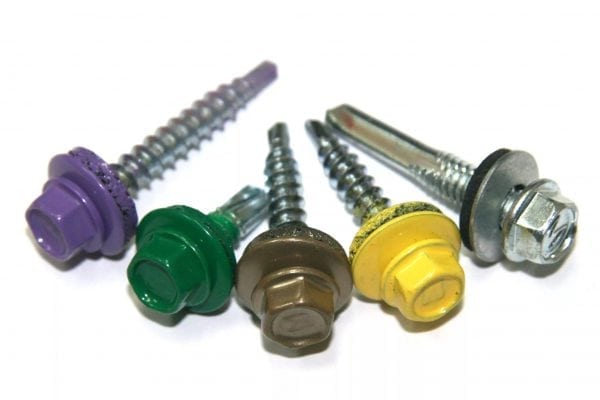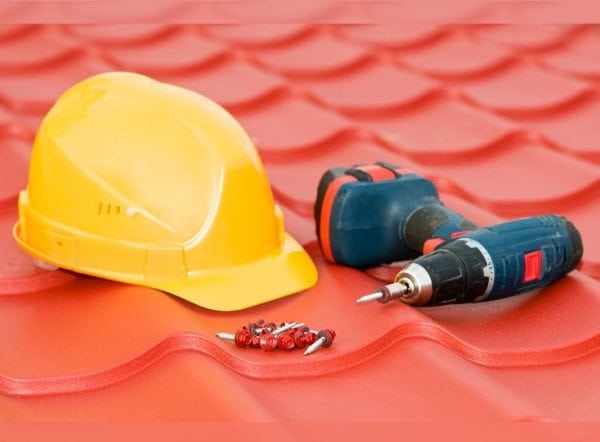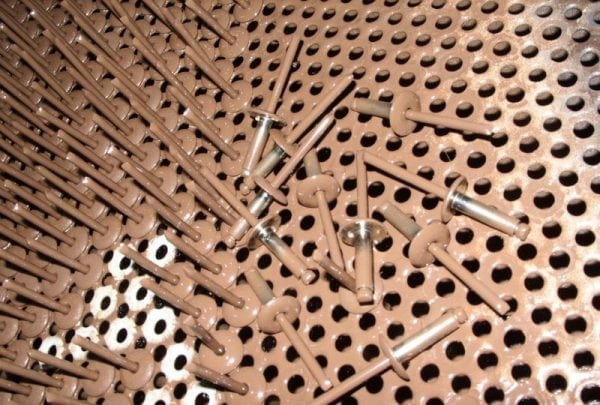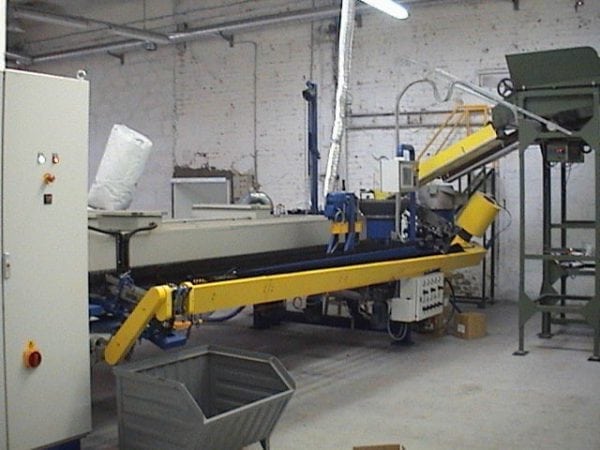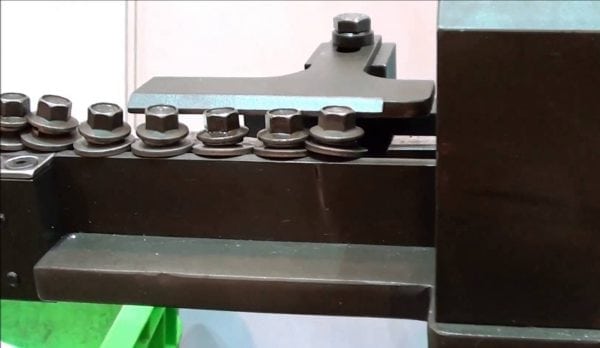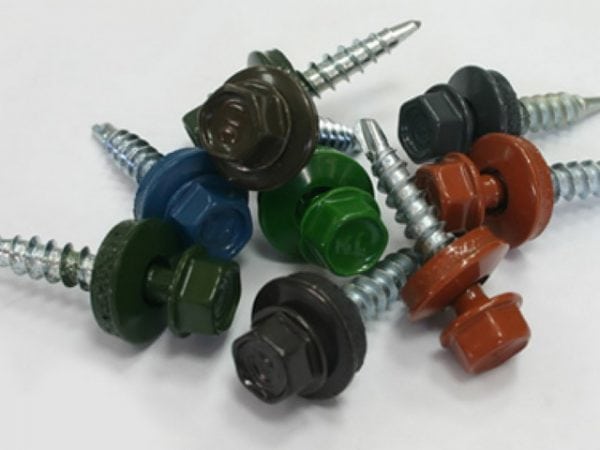Painting self-tapping screws is characterized by certain nuances. The most important of them are the large expenditures of labor, time and paint per each product.
- general information
- Staining tasks
- Technology
- Industrial method of painting
- Self-painting method
- Problems of industrial painting of self-tapping screws
- Solving the problem of a small target
- Batch processing
- Conveyor
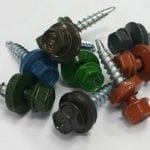
If the task is to paint several screws, these factors are not significant. However, already in small-scale production, these problems seriously affect work efficiency.
general information
Self-tapping screws are widely used in construction and compete with nails as a fastener.
Compared to nails, self-tapping screws have a number of important advantages:
- More reliable fastening, since the thread holds the part better than the smooth body of the nail.
- Gentle effect on building material when screwing. Nails often crack boards and other materials.
- When screwing a self-tapping screw there is no need to swing the hammer, which allows the use of these fasteners in hard-to-reach places.
to contents ↑Advice! To screw in the screws, it is recommended to use a screwdriver. You can choose the battery model or network. Such a device will greatly facilitate the work.
Staining tasks
Painting self-tapping screws has several functions:
- Protective. The main disadvantage of self-tapping screws is their tendency to corrosion. It is for this reason that this part needs to be painted, since the risk of rusting the metal is reduced. The corrosion process develops slowly: at first small dark spots appear on the metal, and later on the product is more and more affected by rust, up to complete destruction. The paint prevents the ingress of water or the negative effects of moisture on the metal.
- Aesthetic. The painted product looks more attractive from an aesthetic point of view, in harmony with the surrounding details.
Note! If self-tapping screws are supposed to be used outdoors, it is recommended to select a paint with high resistance to atmospheric precipitation, ultraviolet and temperature extremes.
Thus, applying paint to self-tapping screws will increase their service life and improve the quality of fastening.
to contents ↑Technology
There are two ways to paint screws:
- At the preliminary stage - using specialized equipment or do it yourself.
- After installing the fastener.
Industrial method of painting
The most progressive method of coloring self-tapping screws is the use of powder painting. This material penetrates the smallest recesses of the part. The grooves for the screwdriver remain open.
Powder paint is applied as follows:
- We prepare the surface for staining. First, remove oil and grease marks, any other contaminants. Purification by white spirit.
- When the part is completely dry, put it in the spray booth, where the paint is supplied with special spray guns. The bottom of the press washer should not be touched to maintain the tightening force.
- The last step is polymerization. The process is to melt the paint at 200 degrees. The molten substance spreads and enters into all the smallest pores.
- After polymerization, the screws are cooled and packaged for sale.
Self-painting method
You can paint the screws with acrylic or alkyd paint. The choice of a specific paintwork composition should be dictated by the color of the structure to be fixed and the color of the finish.
According to the requirements of GOST, locking threaded joints (this happens when painting screws) is the norm. The lack of painting in the complexity of dismantling structures fixed with painted self-tapping screws. It is almost impossible to get such self-tapping screws. In addition, the reuse of self-tapping screws is not possible.
to contents ↑Problems of industrial painting of self-tapping screws
When a large part is painted, a large part of the spray jet is directed to the surface of the product. However, the smaller the part, the more paint material passes by it. Even the electrostatic field does not provide compensation for the "small target effect".
There are two ways to change the situation:
- To paint several screws at once, spaced apart from each other at a small distance.
- Put the process on a thread (pipeline or batch processing).
Solving the problem of a small target
If several self-tapping screws are placed in the working area, this will increase the percentage of paint that has been sprayed at the address. Increasing the efficiency of paint consumption is achieved by reducing the empty area.
An example is the powder coating of washers, nuts, the painting of roofing screws, washers or nuts, and other flat parts. If you place as many such products as possible per unit area, paint loss will be minimized.
Despite the fact that an increase in density reduces recirculation, too small a distance between the screws will lead to poor staining of the side surfaces. Most of the paint will remain on the front parts of the screws, which are located opposite the spray gun. When staining, they try to avoid the effect of mutual shielding, leaving at least twice the depth of the working space between the screws.
to contents ↑
Batch processing
Painting a lot of screws and washers saves a lot of time. An example is the situation when the operator has a spray booth where there is not one self-tapping screw, but a container with hundreds of products. Of course, labor productivity is increasing.
To carry out batch processing, you will need a special tooling, which makes it possible to work with many self-tapping screws as an integral part.
Powder coating of screws is performed in the following sequence:
- From the preparatory post to the spray booth.
- From spray booth to polymerization device.
- From a polymerization device to cooling equipment.
- From cooling to the filling machine.
Such equipment allows you to implement the principle of a one-time staining of many self-tapping screws.
to contents ↑Conveyor
Work conveyor implies a high level of automation. The technology provides for the presence of automatically working equipment for painting, where all of the above operations are performed in strict sequence.
Most often, conveyor painting is carried out without the direct involvement of personnel. This principle of organization of work is used in large-scale production.

